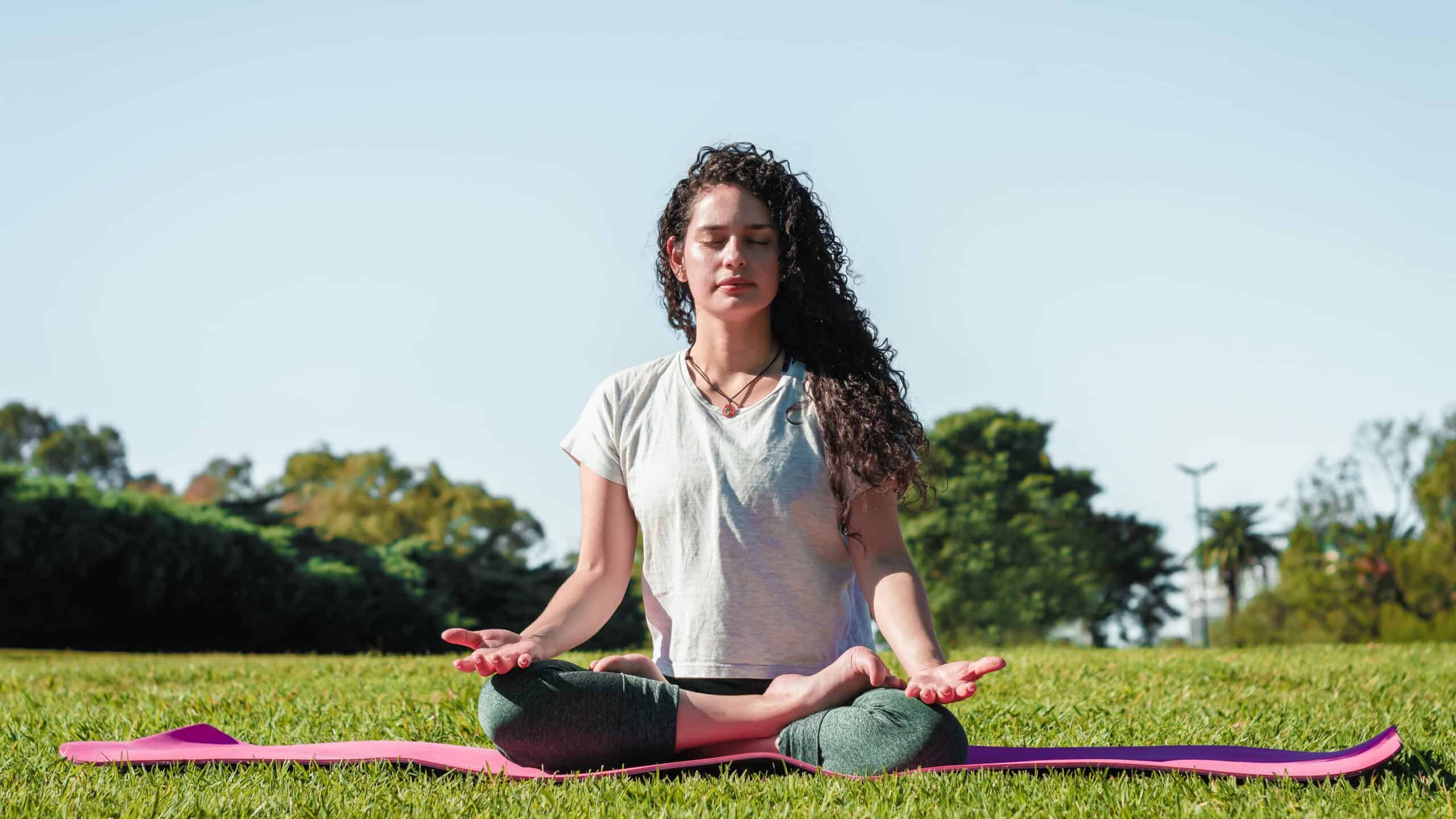Box breathing techniques have been gaining popularity among spiritual seekers and those looking to improve their overall well-being. This powerful yet simple method, also known as square breathing or four-square breathing, has its roots in the tactical training of Navy SEALs. By regulating your breath and engaging the diaphragm, box breathing can bring a variety of advantages to mental and physical health.
In this blog post, we will delve into the specifics of practicing box breathing correctly, from preparation to step-by-step execution. We will also explore how it can help reduce stress and anxiety while improving focus and concentration. Furthermore, you’ll discover how this deep-breathing technique may be beneficial in treating various mental health conditions such as Generalized Anxiety Disorder (GAD), Panic Disorder (PD), and Post-Traumatic Stress Disorder (PTSD).
To ensure a smooth start on your journey with box breathing techniques, we’ll share essential tips for beginners including avoiding dizziness during practice sessions by choosing the right environment and determining optimal frequency and duration. Finally, we’ll provide helpful visual aids like GIFs that demonstrate proper technique so you can fully embrace the power of box breathing.
Box Breathing Technique

Learn the step-by-step process of box breathing, a technique used by athletes, U.S. Navy SEALs, police officers, and nurses to heighten performance and concentration while also being a powerful stress reliever. Find a tranquil spot with relaxed palms, then begin this easy yet potent procedure that entails taking in deeply via your nostrils for four seconds, retaining the air for another four seconds, and slowly exhaling through your mouth.
Preparing yourself for box breathing
To get started with practicing box breathing techniques effectively, it’s essential to prepare yourself mentally and physically. Follow these steps:
- Create a calm environment: Find a quiet space where you can sit or lie down comfortably without distractions.
- Maintain good posture: Sit upright in a chair or on the floor with your back straight but not tense.
- Relax your body: Close your eyes if it helps you focus better; ensure that all muscles are loose and tension-free.
- Breathe normally: Before beginning the actual exercise, take several normal breaths to help center yourself.
A Step-by-Step Guide to Performing Box Breathing Technique
The following guide will walk you through each step of performing the box breathing technique properly:
- Inhale slowly: Take a deep breath through your nose as you count silently from one to four (4 seconds). As you inhale, visualize the air filling your lungs and expanding your diaphragm.
- Hold your breath: After completing the four-count inhalation, hold that breath for another slow count of four (4 seconds). During this time, try to keep all muscles relaxed and avoid tensing up.
- Exhale slowly: Slowly exhale through your mouth while counting silently from one to four (4 seconds). As you breathe out, imagine releasing any stress or tension with each second that passes.
- Hold again: After fully exhaling, hold an empty breath for a final slow count of four (4 seconds). Use this pause as an opportunity to clear your mind and refocus on the exercise.
The entire process is called box breathing because it forms a square pattern when visualized. It’s also known as square breathing or tactical breathing. To reap maximum benefits from practicing box breathing techniques regularly, aim for at least five minutes per session – but remember always to listen to what feels comfortable for you.
Box breathing is a powerful tool to help manage stress and improve well-being, making it an invaluable technique for spiritual seekers. By exploring the benefits of box breathing, we can further understand how this practice helps us lead healthier lives.
Benefits of Box Breathing
Practicing box breathing regularly offers numerous benefits that can improve your overall well-being. Box breathing can be a powerful tool to boost mental and physical health, from diminishing stress levels to augmenting focus and attention.
Reducing Stress and Anxiety
According to the Mayo Clinic, intentional deep breathing exercises like box breathing can calm the autonomic nervous system, which is responsible for regulating our body’s fight-or-flight mode. By activating the parasympathetic nervous system, you stimulate a relaxation response that helps alleviate stress and anxiety symptoms.
Improving Focus and Concentration
The practice of box breathing requires focused attention on counting breaths while inhaling, holding, exhaling, and pausing between breaths. This process trains your mind to concentrate on one task at a time without getting distracted by external stimuli or intrusive thoughts. Regular use of this technique can help you to concentrate on one thing without being distracted by outside influences or inner thoughts, leading to better focus in other aspects of life.
Lowering Blood Pressure
In addition to its calming effects on the nervous system, research suggests that deep diaphragmatic breathing techniques such as box breathing may help lower blood pressure levels naturally. When practiced consistently over time, these techniques could contribute significantly towards maintaining healthy blood pressure levels in individuals with hypertension or those at risk for developing it.
- Bonus Benefit:
- Navy SEALs have been known to use tactical variations of this technique called four-square breathing to help them stay calm and focused under high-pressure situations. This further highlights the effectiveness of box breathing in managing stress and enhancing performance.
You can experience improved mental clarity, reduced stress levels, and increased overall well-being by taking a few moments each day to practice box breathing. By devoting a brief period of time to this practice each day, you can easily experience greater mental clarity, lower stress levels, and improved overall well-being.
The benefits of box breathing are numerous and can be an effective way to reduce stress, anxiety, improve focus and concentration, as well as lower blood pressure. Given its potential to reduce stress, anxiety, and blood pressure, box breathing may also be effective for treating mental health conditions such as GAD, PD, or PTSD.
Treating Mental Health Conditions with Box Breathing

Explore how box breathing can help treat various mental health conditions such as generalized anxiety disorder (GAD), panic disorder (PD), post-traumatic stress disorder (PTSD), depression, or other related disorders by promoting relaxation techniques that counteract symptoms often experienced during episodes or flare-ups.
Generalized Anxiety Disorder (GAD)
People suffering from generalized anxiety disorder tend to experience excessive worry and fear about everyday situations. Practicing box breathing regularly helps in activating the parasympathetic nervous system, which reduces stress levels and promotes a sense of calmness. This technique has been found effective in managing GAD symptoms, helping individuals regain control over their thoughts and emotions.
Panic Disorder (PD)
Panic disorder is characterized by sudden bouts of intense fear called panic attacks. Sudden, intense fear episodes known as panic attacks may manifest in physical symptoms such as rapid heart rate, difficulty breathing, lightheadedness, and chest pain. Practicing box breathing during an attack or when feeling anxious can slow down their heart rate and regulate their nervous system response. As a result, this deep-breathing technique aids in reducing the severity of panic attacks while providing relief from associated discomforts.
Post-Traumatic Stress Disorder (PTSD)
PTSD is a psychological condition that may be set off by encountering or seeing something disturbing. Individuals with PTSD may experience intrusive memories, flashbacks, and heightened anxiety levels; however, box breathing can be used as a coping mechanism to help regulate the fight-or-flight response associated with this disorder. Box breathing can help manage these symptoms by providing an effective coping mechanism to regulate the fight-or-flight response associated with PTSD. By focusing on their breath and practicing this technique regularly, individuals can experience reduced anxiety levels and improved emotional regulation.
Incorporating box breathing into your daily routine may prove beneficial in managing various mental health conditions while promoting overall well-being. Still, seeking medical counsel before incorporating any relaxation methods into your mental health plan is wise.
By utilizing box breathing techniques, individuals with mental health conditions such as GAD, PD, and PTSD can reduce their symptoms of distress. Let us now explore some suggestions for those just starting out in box breathing.
Tips for Beginners Practicing Box Breathing

As a beginner, it’s essential to approach box breathing with the right mindset and techniques to ensure effective practice without causing dizziness or discomfort. In this section, we’ll discuss practical tips on how beginners can get started with box breathing while maximizing its benefits.
Avoiding Dizziness and Discomfort
When first starting out with box breathing, some individuals may experience dizziness after a few rounds. To prevent this from happening, make sure you’re seated comfortably throughout the exercise and resume normal breathing if you start feeling lightheaded. As your body becomes more accustomed to deep breaths, gradually increase the duration of each round.
Choosing the Right Environment for Practice
Finding a quiet and dimly lit environment is crucial when practicing box breathing as it allows you to focus solely on your breath control. A peaceful setting will help in calming your nervous system by minimizing external distractions that could hinder relaxation during practice sessions. Consider creating a dedicated space at home where you can consistently engage in breathing exercises.
Determining Optimal Frequency and Duration
The frequency and duration of practicing box breathing depend on individual preferences as well as personal schedules. However, incorporating regular sessions into your daily routine can yield better results over time:
- Morning practice: Starting your day with 5-10 minutes of box breathing helps set a positive tone for the rest of the day by reducing stress levels.
- Midday break: Taking a few minutes during lunch or work breaks to practice box breathing can help refocus your mind and boost concentration.
- Evening relaxation: Engaging in box breathing before bedtime promotes relaxation, preparing you for a restful night’s sleep.
Incorporating these tips into your daily routine will ensure that you make the most out of practicing box breathing while avoiding any potential discomfort. As you progress with this technique, don’t hesitate to experiment with different environments and durations to find what works best for your personal well-being journey.
Gaining mastery of box breathing is key to boosting mental health and minimizing tension, so it’s essential that novices are aware of the right way to do it. To help with this, GIFs and visual aids can provide a helpful reference point when learning the correct technique.
Box Breathing Videos
Enhance your box breathing experience by utilizing helpful videos that can guide you through the process, ensuring proper technique while providing a calming focal point during each session. These resources are especially beneficial to beginners who may find it challenging to maintain consistent counting without external assistance.
Videos Demonstrating Correct Technique
If you prefer more detailed guidance or would like to see real-life demonstrations of the box breathing technique, there are numerous videos available online. Here are some recommended video tutorials:
- Box Breathing Technique Explained by a Navy SEAL
- How to Practice Box Breathing for Stress Relief and Focus
- A Guided Box Breathing Meditation Session
By following along with these videos, you can ensure that you are performing the box breathing technique correctly and maximizing its benefits. Always be mindful of your body’s needs and tailor the speed or length of your practice accordingly.
Frequently Asked Questions Box Breathing Techniques
How effective is box breathing?
Box breathing can be highly effective in reducing stress, and anxiety, and improving focus. It helps activate the parasympathetic nervous system, promoting relaxation and mental clarity. However, individual results may vary depending on factors such as consistency of practice and personal receptiveness to the technique.
What is the science behind box breathing?
The science behind box breathing involves stimulating the parasympathetic nervous system, which slows down the heart rate and promotes relaxation. This counteracts the effects of stress by lowering cortisol levels and increasing feelings of calmness. Additionally, it improves oxygen delivery to cells, enhancing overall cognitive function.
What is the 4444 breathing technique?
The 4444 breathing technique refers to a specific form of box breathing where each phase lasts for four seconds: inhale for four seconds, hold your breath for four seconds, exhale for four seconds, then hold again for another four seconds before repeating. This pattern creates a balanced rhythm that promotes relaxation and concentration.
Do Navy Seals use box breathing?
Navy Seals utilize box breathing as part of their training regimen to help manage stress during high-pressure situations. The technique enables them to remain calm, focused, and make clear decisions under extreme conditions.
Conclusion
Box breathing is an efficacious method to assist in handling tension and unease, amplifying one’s well-being.
In addition to reducing stress and anxiety, box breathing has been shown to improve focus and concentration while lowering blood pressure. Box breathing is beneficial for managing mental health issues like GAD, PD, and PTSD.


